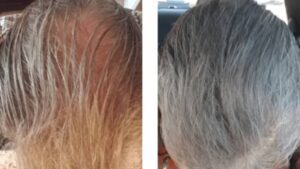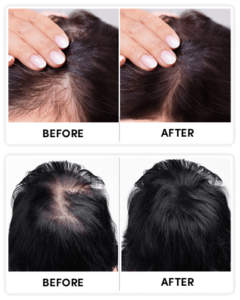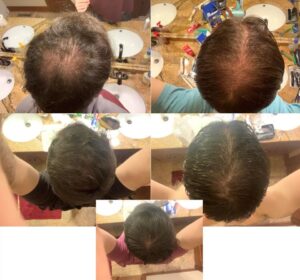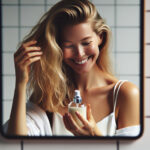Toxic Hair Dyes Still on the Market: How to Choose Safer Alternatives

Unveiling the Hidden Dangers of Toxic Hair Dyes
In today's world, where self-expression is often painted in the hues we choose for ourselves, hair dye has become a go-to for many. But beneath those vibrant colors and shiny locks lies an unseen threat: toxic hair dyes that are shockingly still available on shelves. While we all yearn to look fabulous, it's vital to be aware of the potential dangers lurking in some hair dyes. So, let's explore why certain hair dyes can be harmful and how you can opt for safer alternatives.
The Perils of Toxic Hair Dyes
When it comes to toxic hair dyes, we're not just talking about aesthetics; it's a serious health issue. Many traditional hair dyes are loaded with harmful chemicals that might trigger allergic reactions, skin irritation, and even more severe health concerns over time. The stakes are even higher for those with sensitive skin or existing health issues. Understanding these risks is the first step towards making smarter choices about what we put on our heads.
Harmful Chemicals Commonly Found in Hair Dyes
You'll often find chemicals like ammonia, parabens, resorcinol, and phenylenediamine (PPD) in toxic hair dyes. Ammonia helps the color penetrate the hair shaft but can also irritate the scalp and cause respiratory problems. Parabens act as preservatives but are linked to hormone disruption. Resorcinol may cause hormonal imbalances, and PPD is notorious for sparking allergic reactions. Knowing these culprits can help you dodge these harmful ingredients.
Health Repercussions of Toxic Hair Dyes
The health fallout from using toxic hair dyes isn't just about immediate reactions. Over time, exposure to these chemicals could heighten the risk of cancer and other serious health conditions. Our scalps are highly absorbent, allowing these toxins to easily enter the bloodstream. It's a sobering reality that our desire for beauty might come at such a high cost to our health.
Spotting Toxic Hair Dyes on Store Shelves
Brands with a Reputation for Using Toxic Ingredients
Sadly, several popular brands still incorporate toxic ingredients in their hair dyes. While it might be tempting to stick with familiar names, it's crucial to dig deeper. Some brands have been criticized for their reliance on harmful chemicals, even when consumers are clamoring for safer options. Always scrutinize the ingredient list and try to support brands committed to safer formulas.
Navigating Hair Dye Labels for Toxicity
Reading hair dye labels might feel overwhelming, but it's a skill that pays off. Look for labels that clearly say "ammonia-free," "paraben-free," and "PPD-free." Beware of vague terms like "natural" or "organic," as they might still harbor harmful chemicals. Getting acquainted with common chemical names will help you spot them on ingredient lists, steering you away from potentially dangerous products.
Top Trichologist: Do This To Your Scalp To Regrow A Full Head Of Hair

Completely natural and dirt cheap way that makes it possible for you to finally regrow all your hair back.
Watch free special videoRecognizing Signs of Toxic Formulations
Several telltale signs can indicate a toxic hair dye. A strong chemical odor, a burning feeling during application, or ongoing scalp irritation are all warning signals. If you notice any of these, it's wise to stop using the product immediately. Always perform a patch test before trying a new product to check for negative reactions. Prevention is key to safeguarding your health.
Health Hazards Linked to Toxic Hair Dyes
Skin Sensitivities and Allergic Responses
One of the most immediate concerns with toxic hair dyes is skin irritation. Many users experience itching, redness, or even blistering after application. Allergic reactions can range from mild discomfort to severe dermatitis. In rare instances, some may face anaphylaxis, a potentially fatal allergic reaction. It's crucial to listen to your body and seek medical help if needed.
Long-term Health Concerns
Beyond immediate effects, the long-term health risks of using toxic hair dyes are worrying. Studies have linked prolonged exposure to certain dye chemicals with a higher chance of developing cancer, particularly bladder cancer. The risk is especially significant for frequent users or those working in settings with high chemical exposure. Being aware of these risks can guide you towards healthier choices.
Environmental Consequences of Toxic Hair Dyes
The environmental toll of toxic hair dyes is another factor to consider. As these products wash down the drain, they contribute to water pollution, harming aquatic life. The production and disposal of chemical-heavy dyes also add to environmental strain. Opting for eco-friendly alternatives not only benefits your health but also fosters a more sustainable planet.
Opting for Safer Hair Dye Alternatives
Natural Ingredients to Seek Out
When hunting for safer hair dye options, look for products boasting natural ingredients. Henna, indigo, and plant-based extracts like chamomile and walnut shell are excellent choices. These elements offer rich color without the nasty side effects of chemical dyes. Plus, they nourish your hair, making it healthier and more resilient.
Brands Dedicated to Safe Hair Dye Practices
A number of brands are committed to providing safe and effective hair dye solutions. Companies like Herbatint, Naturtint, and Madison Reed are celebrated for their use of non-toxic ingredients. These brands prioritize consumer health and environmental friendliness, offering a spectrum of colors without compromising safety. Supporting such brands promotes a safer industry.
Watch Your Hair Come Back FASTER Than You EVER Dreamed Possible

WITHOUT Expensive Medications, Lasers, or Painful Surgeries!
Learn moreDIY Hair Dye Recipes with Safe Ingredients
If you're up for a creative challenge, why not try crafting your own hair dye at home? DIY hair dye recipes using safe ingredients can be both fun and fulfilling. Ingredients like beet juice for red tones, coffee for browns, and lemon juice for natural highlights are great starting points. These alternatives provide a chemical-free solution and allow for personalized color experimentation.
The Upsides of Switching to Safer Hair Dye Options
Better Hair and Scalp Health
Making the switch to safer hair dye options can lead to noticeable improvements in hair and scalp health. Without harsh chemicals, your hair is less likely to become dry and brittle. Natural dyes can also soothe the scalp, reducing irritation and promoting overall scalp well-being. Healthy hair isn't just about looks; it mirrors your body's overall health.
A Smaller Environmental Footprint
Choosing eco-friendly hair dyes helps shrink your environmental footprint. By choosing products that are biodegradable and free from harmful chemicals, you support the planet's health. This small tweak in your beauty routine can make a big impact, promoting cleaner waterways and healthier ecosystems. It's a win-win for both you and the environment.
Long-term Health Advantages
The long-term health benefits of using safe hair dyes are significant. Avoiding toxic chemicals reduces your risk of developing serious health issues. This proactive approach to personal care can lead to better health outcomes as you age. Embracing safer hair dye options is an investment in your health that pays off over time.
Tips for Shifting from Toxic to Safe Hair Dyes
Strategies for a Smooth Transition
Shifting from toxic to safe hair dyes doesn't need to be abrupt. Gradual strategies can make the process smoother and less intimidating. Start by alternating between your current product and a safer option. This lets your hair adjust gradually while minimizing shock to your strands. Gradually, you can fully transition to using only non-toxic dyes.
Getting Your Hair Ready for Natural Dyes
Preparing your hair for natural dyes is a crucial step in the transition. Ensure your hair is healthy and moisturized, as natural dyes work best on well-nourished hair. Regular deep conditioning treatments and steering clear of heat styling can help improve your hair's condition. This preparation ensures the best possible results with natural dyes.
Why The Ancient Samurai Warriors Never Lost Their Hair…

guaranteed to work for any men or women out there...
Watch nowMaintaining and Caring for Dyed Hair
Once you've made the switch, proper maintenance and care are essential for keeping your dyed hair in top shape. Use sulfate-free shampoos and conditioners to prevent color fading. Regular trims and minimal heat styling will keep your hair looking its best. Embrace the natural beauty of your new hair color and enjoy the benefits of a healthier hair care routine.
Wrapping Up: Avoiding Toxic Hair Dyes on the Market
Educating Yourself and Others
Education is a mighty tool in the battle against toxic hair dyes. By learning and sharing knowledge, you can help foster safer beauty habits. Encourage friends and family to read labels and make informed choices. Together, we can create a demand for safer products in the market.
Pushing for Stricter Regulations
Advocating for stricter regulations on hair dye safety is crucial. Supporting policies that limit harmful chemicals can drive a safer industry. Get involved with organizations working towards these goals and use your voice to advocate for change. Collective action can lead to meaningful improvements in product safety standards.
Adopting a Healthier Lifestyle
Adopting a healthier lifestyle goes beyond hair care. Making conscious choices in all areas of life boosts overall well-being. Whether it's choosing organic foods, using natural skincare products, or opting for eco-friendly cleaning supplies, every small change adds up. A holistic approach to health and wellness benefits both you and the world around you.
Further Resources and Reading
Books and Guides Worth Exploring
For those keen on exploring the world of safe hair care further, several books and guides offer valuable insights. "The Natural Hair Coloring Book" by Christine Shahin and "Better Hair Naturally" by L. J. O'Reilly are excellent resources. These books offer practical tips and recipes for achieving beautiful, healthy hair naturally.
Online Communities and Support Networks
Connecting with online communities and support networks can be incredibly helpful when transitioning to safer hair dyes. Platforms like Reddit and Facebook host groups dedicated to natural hair care, where members share experiences and advice. These communities offer support and encouragement, making the journey to healthier hair less daunting.
Insights from Experts and Research
Keeping informed about the latest research and expert opinions is essential. Reputable sources like the Environmental Working Group (EWG) and the American Cancer Society provide up-to-date information on hair dye ingredient safety. Staying informed about these developments helps you make wise decisions about the products you choose.






